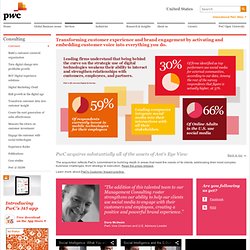

1% rule (Internet culture) Pie chart showing the proportion of lurkers, contributors and creators under the 90–9–1 principle In Internet culture, the 1% rule is a rule of thumb pertaining to participation in an internet community, stating that only 1% of the users of a website actively create new content, while the other 99% of the participants only lurk. A variant is the "90–9–1 principle" (sometimes also presented as the 89:10:1 ratio),[1] which states that in a collaborative website such as a wiki, 90% of the participants of a community only view content, 9% of the participants edit content, and 1% of the participants actively create new content. Both can be compared with the similar rules known to information science, such as the 80/20 rule known as the Pareto principle, that 20 percent of a group will produce 80 percent of the activity, however the activity may be defined.
The actual percentage is likely to vary depending upon the subject matter. Sturgeon's Law. The 1% Rule. 90-9-1. Close Sean founded Ant’s Eye View's Austin practice, where he launched special practices, developed business and oversaw project delivery.

He has worked extensively in marketing operations, brand management, customer service, product development, strategy, process design and measurement projects. Before Ant's Eye View, Sean worked with Dell and pioneered a Social Media Model to improve global brand health, customer service models, and Dell's overall culture. The Model has been cited by books, periodicals and university research for its innovation. Sean led strategy and execution of channel mix (online, phone, retail), pricing/promotion, and marketing communications. "90-9-1" Rule for Participation Inequality: Lurkers vs. Contributors in Internet Communities.
The 1/9/90 Rule of UGC & Why It’s OK to Have Lurkers. Le Travail Collaboratif en Ligne selon MAIN CONSULTANTS: La loi du 90-9-1. Tous ceux qui cherchent à introduire les nouvelles pratiques de travail collaboratif en ligne dans l'entreprise devraient avoir cette loi à l'esprit.

La loi du "90-9-1" résume une dure réalité constatée sur la majorité des sites intra-, extra- ou Internet (qu'ils soient étiquetés "2.0" ou pas) habités par des communautés virtuelles : 90% des membres sont des observateurs muets qui n'apportent (jamais) aucune contribution. 9% des membres sont des contributeurs (très) épisodiques 1% des membres sont les auteurs de 90% des contributions Cette loi, déjà observée par William C.
Hill (Bell Communications Research) au début des années 90 dans les newsgroups Usenet, dans les BBS de Compuserve et dans les discussions électroniques des grandes entreprises, est remise au goût du jour par Jakob Nielsen, le gourou de l'utilisabilité des sites web. Nielsen précise d'ailleurs que cette loi de l'inégalité de participation se décline encore plus sévèrement pour les blogs et les wikis : User Created Content Study 2007. Empowered.